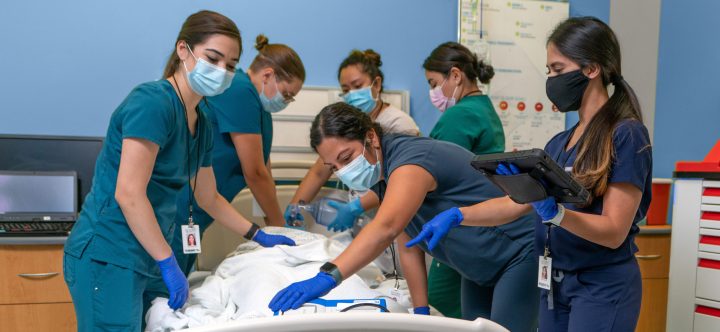In a high-stakes code situation, seamless teamwork saves lives. Among the most critical partnerships in Advanced Cardiovascular Life Support (ACLS) is that of respiratory therapists (RTs) and nurses. While their roles differ, their collaboration is essential to delivering timely, effective interventions when every second counts.
1. Shared Goals, Distinct Roles
During an ACLS event, both nurses and respiratory therapists are focused on stabilizing the patient and restoring spontaneous circulation. But their tasks differ:
- Nurses: Initiate CPR, administer medications, monitor cardiac rhythms, and document the code.
- RTs: Manage the airway, deliver effective ventilations, set up and monitor oxygen delivery, and assist with intubation or advanced airway procedures.
Each role complements the other, creating a synchronized response that boosts survival chances.
2. Airway + Circulation = Team Synergy
High-quality CPR and effective ventilation are the cornerstones of ACLS. Nurses ensure continuous chest compressions and IV access, while RTs focus on optimizing oxygenation and ventilation. They work side-by-side, ensuring compressions and breaths are well-timed and uninterrupted.
This synergy minimizes pauses in CPR and prevents oxygen desaturation, which is key for brain and organ preservation.
3. Pre-Code Communication Builds Success
The best code teams don’t wait until an arrest happens to work together. Pre-code planning—like discussing roles during rapid responses or participating in simulations—allows RTs and nurses to anticipate each other’s actions. This preparation reduces chaos and increases confidence during real events.
4. Post-Code Collaboration Matters, Too
Once return of spontaneous circulation (ROSC) is achieved, RTs and nurses continue working closely. Nurses monitor vital signs, titrate medications, and coordinate care, while RTs manage post-intubation support, ventilator settings, and oxygen needs. Their collaboration ensures a smooth transition from emergency response to critical care.
5. Respect and Understanding Fuel Teamwork
When nurses and RTs understand and respect each other’s scope of practice, communication improves. Simple acts like giving space during intubation or verbalizing rhythm changes in real time can have a big impact on team performance. Mutual respect and clear roles help reduce tension and boost efficiency.
Final Thoughts
ACLS is not a solo act—it’s a team performance. The partnership between nurses and respiratory therapists is a powerful example of interprofessional collaboration in action. When these professionals work in sync, patients get faster, safer, and more effective care.


